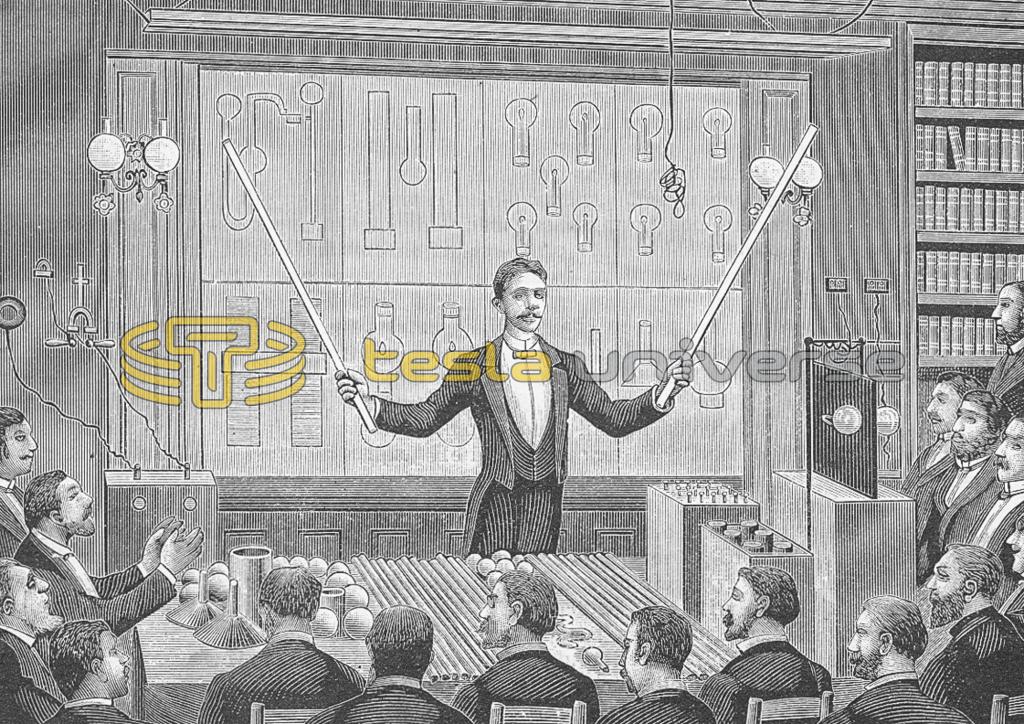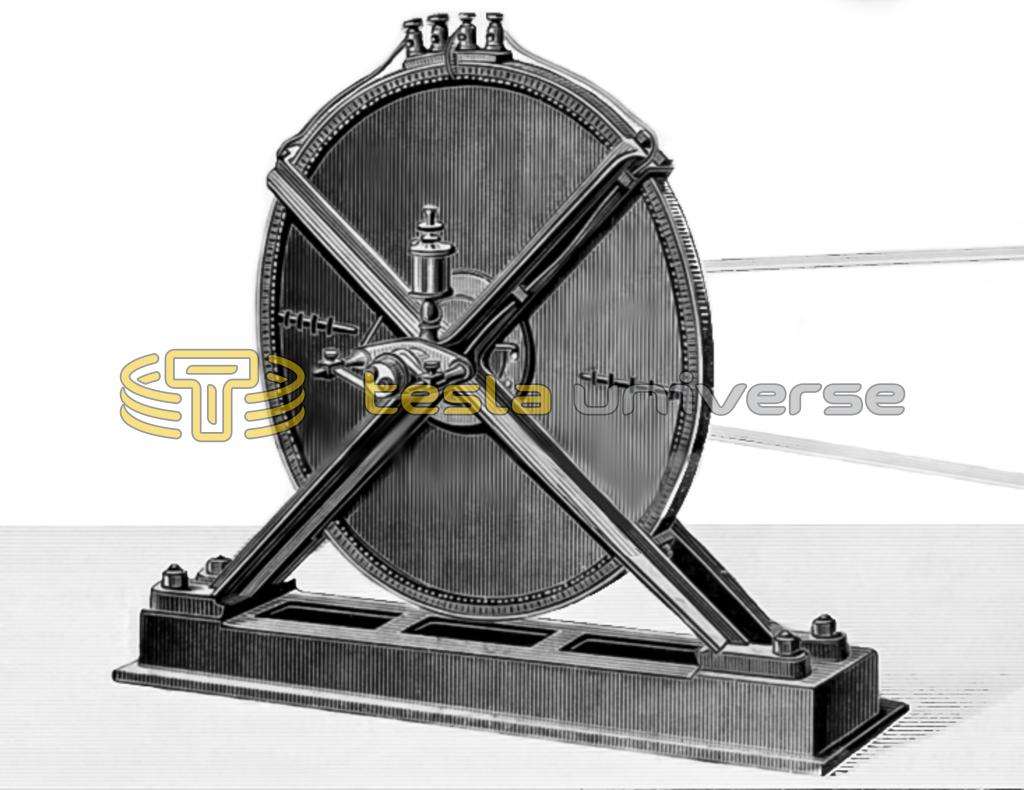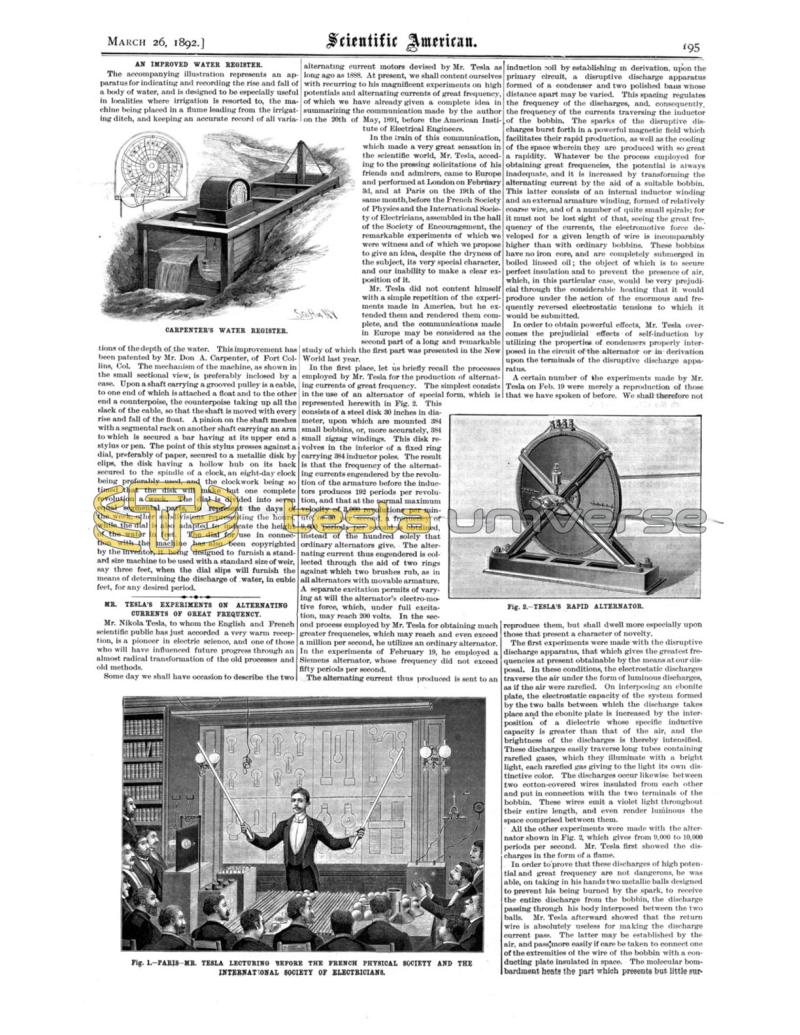
Nikola Tesla Articles
Mr. Tesla's Experiments on Alternating Currents of Great Frequency
Mr. Nikola. Tesla, to whom the English and French scientific public has just accorded a very warm reception, is a pioneer in electric science, and one of those who will have influenced future progress through an almost radical transformation of the old processes and old methods.
Some day we shall have occasion to describe the two alternating current motors devised by Mr. Tesla as long ago as 1888. At present, we shall content ourselves with recurring to his magnificent experiments on high potentials and alternating currents of great frequency, of which we have already given a complete idea in summarizing the communication made by the author on the 20th of May, 1891, before the American Institute of Electrical Engineers.
In the train of this communication, which made a very great sensation in the scientific world, Mr. Tesla, acceding to the pressing solicitations of his friends and admirers, came to Europe and performed at London on February 3rd, and at Paris on the 19th of the same month, before the French Society of Physics and the International Society of Electricians, assembled in the hall of the Society of Encouragement, the remarkable experiments of which we were witness and of which we propose to give an idea, despite the dryness of the subject, its very special character, and our inability to make a clear exposition of it.
Mr. Tesla did not content himself with a simple repetition of the experiments made in America, but he extended them and rendered them complete, and the communications made in Europe may be considered as the second part of a long and remarkable
study of which the first part was presented in the New World last year.
In the first place, let us briefly recall the processes employed by Mr. Tesla for the production of alternating currents of great frequency. The simplest consists in the use of an alternator of special form, which is represented herewith in Fig. 2. This consists of a steel disk 30 inches in diameter, upon which are mounted 384 small bobbins, or, more accurately, 384 small zigzag windings. This disk revolves in the interior of a fixed ring carrying 384 inductor poles. The result is that the frequency of the alternating currents engendered by the revolution of the armature before the inductors produces 192 periods per revolution, and that at the normal maximum velocity of 3,000 revolutions per minute, or 30 per second, a frequency of 9,600 periods per second is obtained, instead of the hundred solely that ordinary alternators give. The alternating current thus engendered is collected through the aid of two rings against which two brushes rub, as in all alternators with movable armature. A separate excitation permits of varying at will the alternator’s electromotive force, which, under full excitation, may reach 200 volts. In the second process employed by Mr. Tesla for obtaining much greater frequencies, which may reach and even exceed a million per second, he utilizes an ordinary alternator. In the experiments of February 19, he employed a Siemens alternator, whose frequency did not exceed fifty periods per second.
The alternating current thus produced is sent to an induction coil by establishing in derivation, upon the primary circuit, a disruptive discharge apparatus formed of a condenser and two polished balls whose distance apart may be varied. This spacing regulates the frequency of the discharges, and, consequently, the frequency of the currents traversing the inductor of the bobbin. The sparks of the disruptive discharges burst forth in a powerful magnetic field which facilitates their rapid production, as well as the cooling of the space wherein they are produced with so great a rapidity. Whatever be the process employed for obtaining great frequencies, the potential is always inadequate, and it is increased by transforming the alternating current by the aid of a suitable bobbin. This latter consists of an internal inductor winding and an external armature winding, formed of relatively coarse wire, and of a number of quite small spirals; for it must not be lost sight of that, seeing the great frequency of the currents, the electromotive force developed for a given length of wire is incomparably higher than with ordinary bobbins. These bobbins have no iron core, and are completely submerged in boiled linseed oil; the object of which is to secure perfect insulation and to prevent the presence of air, which, in this particular case, would be very prejudicial through the considerable heating that it would produce under the action of the enormous and frequently reversed electrostatic tensions to which it would be submitted.
In order to obtain powerful effects, Mr. Tesla overcomes the prejudicial effects of self-induction by utilizing the properties or condensers properly interposed in the circuit of the alternator or in derivation upon the terminals of the disruptive discharge apparatus.
A certain number of the experiments made by Mr. Tesla on Feb. 19 were merely a reproduction of those that we have spoken of before. We shall therefore not
reproduce them, but shall dwell more especially upon those that present a character of novelty.
The first experiments were made with the disruptive discharge apparatus, that which gives the greatest frequencies at present obtainable by the means at our disposal. In these conditions, the electrostatic discharges traverse the air under the form of luminous discharges, as if the air were rarefied. On interposing an ebonite plate, the electrostatic capacity of the system formed by the two balls between which the discharge takes place and the ebonite plate is increased by the interposition of a dielectric whose specific inductive capacity is greater than that of the air, and the brightness of the discharges is thereby intensified. These discharges easily traverse long tubes containing rarefied gases, which they illuminate with a bright light, each rarefied gas giving to the light its own distinctive color. The discharges occur likewise between two cotton-covered wires insulated from each other and put in connection with the two terminals of the bobbin. These wires emit a violet light throughout their entire length, and even render luminous the space comprised between them.
All the other experiments were made with the alternator shown in Fig. 2, which gives from 9,000 to 10,000 periods per second. Mr. Tesla first showed the discharges in the form of a flame.
In order to prove that these discharges of high potential and great frequency are not dangerous, he was able, on taking in his hands two metallic balls designed to prevent his being burned by the spark, to receive the entire discharge from the bobbin, the discharge passing through his body interposed between the two balls. Mr. Tesla afterward showed that the return wire is absolutely useless for making the discharge current pass. The latter may be established by the air, and pass more easily if care be taken to connect one of the extremities of the wire of the bobbin with a conducting plate insulated in space. The molecular bombardment heats the part which presents but little surface put in communication with the second pole of the bobbin, and it was thus that Mr. Tesla showed us the incandescence of a thin platinum wire or of a carbon filament inclosed in a globe of rarefied air.
Every increase in the capacity to the system increases the discharge current, and, consequently, the incandescence. It suffices, for example, to bring the hand near the globe containing the incandescent body, and to place a metallic shade above the latter, or even (an effect paradoxical in appearance) to place the shade alongside of the globe, to produce an increase of brightness resulting from the increase of the electrostatic capacity.
The wire to which the filament is attached is connected, as we have said, with the secondary wire of the bobbin, whose other wire communicates with an insulated metallic plate. Such metallic communication is not indispensable. In fact, if the wire is covered with lead, a layer of gutta percha entirely insulating the copper wire and the leaden tube that envelops it, the lamp with a single filament becomes lighted as brilliantly when it is put in communication with the copper wire or the leaden tube.
Mr. Tesla thus actuated a Crookes electric radiator, and even a special single wire motor, to describe which would lead us too far. He afterward illuminated certain bodies that are but mediocre conductors, such as alumina, carbon, lime, “carborundum,” and a few phosphorescent bodies, such as sulphide of calcium, yttria, sulphide of zinc, and the ruby, the marvelous effects of which several times gained the unanimous applause of the spectators. Mr. Tesla finally terminated with a few experiments in the illumination of tubes of rarefied gases without wires or electrodes, the tubes being simply placed in the periodical electrostatic field produced between one of the insulated poles of the bobbin on the one hand and an insulated metallic plate placed above the experimenter and communicating with the other pole of the bobbin on the other hand.
Fig. 1 shows one of these experiments, in which Mr. Tesla is producing the illumination of two tubes at once. In order to effect the extinction of one of these tubes, it suffices to interpose a middlingly conductive screen in the electrostatic field, or to place the tube in a direction sensibly perpendicular to the flux of induction of the field. The same tube remains dark in all positions if it is held by its two extremities at once, the body forming a screen. On sliding the hand along the tube, it is possible to render one of its extremities luminous. Nothing is more curious than to see the light produced by this process thus extinguished and relighted at will.
Such are, very briefly described, the principal experiments which, for more than two hours, deeply interested the members of the two societies mentioned above, who had the good fortune to be present at Mr. Tesla’s lecture.
It would be difficult as yet to say what future is in store for them from the standpoint of an industrial, utilitarian and practical new mode of production of light. The more so as the dream of the inventor is broader and his views more exalted than the experiments that he presented to us allow to be seen. His final ambition appears to be to transform the energy of the medium that environs us, and which is very evident by its numerous manifestations, into light, or at least to obtain therefrom radiations of the same wave length and same frequency as those that produce luminous sensations. Crookes’ radiometer has already proved that it is possible to convert the radiant energy of a medium directly into mechanical energy, and although, from the standpoint of rendering, this radiometer is the most detestable of all transformation apparatus, it is none the less the most admirable, by the fact that it affords us a tangible demonstration of the possibility of such transformation.
On the other hand, Mr. Tesla, in his memorable experiments, has shown us that, on periodically varying, with very great frequency, an electrostatic field, it is possible to place apparatus of great simplicity therein, such as tubes of rarefied gases, which collect a portion of such energy and render it luminous. To the philosopher and savant nothing more is necessary to establish the possibility, if not the probability, of the realization of Mr. Tesla’s final views. To him the light of the future resides in the incandescence of solids, gases, and phosphorescent bodies excited (if we may use a somewhat vague expression) by high potentials varying with very great frequency.
The young scientist is convinced of this as a precursor, and almost as a prophet. He introduces so much warmth and sincerity into his explanations and experiments that faith wins us, and, despite ourselves, we believe that we are witnesses of the dawn of a nearby revolution in the present processes of illumination.
— E. Hospitalier, in La Namre.


